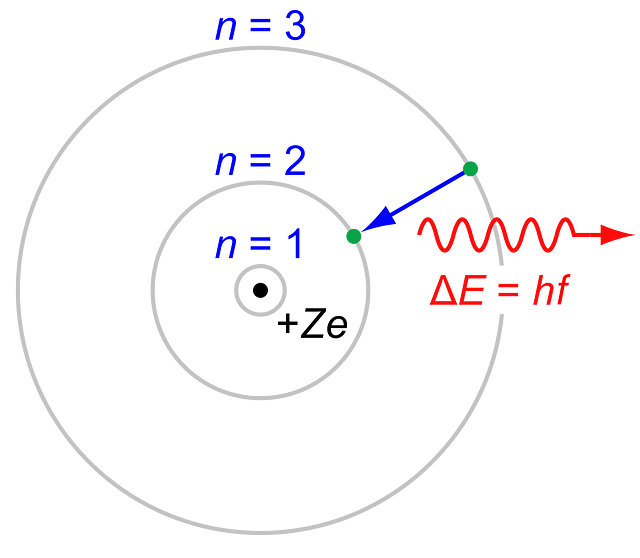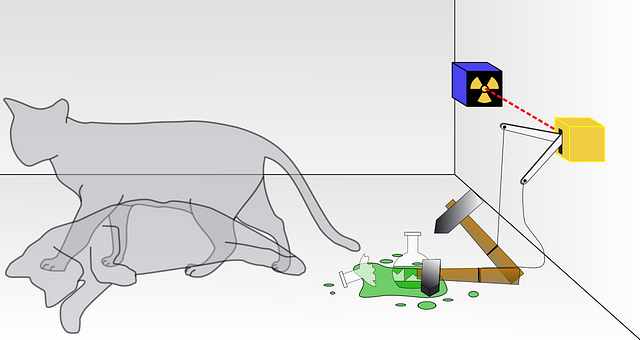Latest news about Bitcoin and all cryptocurrencies. Your daily crypto news habit.
 Juan Pablo Rodriguez on Unsplash.comJanus am I; oldest of potentates! Forward I look and backward and below I count as god of avenues and gates. The years that through my portals come and go. I block the roads and drift the fields with snow, I chase the wild-fowl from the frozen fen; My frosts congeal the rivers in their flow, My fires light up the hearths and hearts of men— H.W. Longfellow For The Children’s Almanac
Juan Pablo Rodriguez on Unsplash.comJanus am I; oldest of potentates! Forward I look and backward and below I count as god of avenues and gates. The years that through my portals come and go. I block the roads and drift the fields with snow, I chase the wild-fowl from the frozen fen; My frosts congeal the rivers in their flow, My fires light up the hearths and hearts of men— H.W. Longfellow For The Children’s Almanac
For many, life is synonymous with one concept. The concept of trade-offs ie choosing one over the other. In fact, Economics as a subject deals with scarcity and modeling the efforts behind rational choice. The age old wisdom behind tradeoffs is that you can’t have both. This article looks at conventional thinking and a need to break through artificial notions of scarcity. Ultimately, it argues that the only applicable limits are the ones that you set for yourself in your mind. In doing so, you become Janus-like: your own best friend and your own mortal enemy. This article stresses the need to uncondition your mind and break free of stereotypes. Ultimately, to develop a quantum state of mind. A state of mind that looks beyond the surface and informs us that not everything in life is a trade off. At times, you can have your proverbial cake and eat it too.
Creation of an Unconditioned Mind Explained By Schrödinger’s Cat
The word “quantum” in Latin means “how much” or “how great”. It refers to a discrete value assigned to physical particles such as the energy of an atom at rest. The discovery that particles are discrete packages of energy with wave like properties heralded the dawn of a completely different way of thinking about subatomic particles called ‘quantum physics’.
Today, quantum physics provides a mathematical framework to explain a wide variety of phenomena including the behavior of light on the screen of your cellphone. Classical physics can explain many straightforward phenomena such as gravity or reaction to an action such as what happens when you drop a ball or bounce it off a surface. However, when it comes to more complex phenomena such as the conversion of light into electricity or why different types (isotopes) of the same element emit different spectra of light , quantum physics takes over where classical physics ends. Also, while classical physics looks at a macroscopic view of matter, quantum physics studies subatomic particles.
In the year 1913, Neils Bohr and Ernest Rutherford introduced the Bohr-Rutherford model of electrons orbiting the nucleus in a hydrogen atom.
Bohr (born 1885 in Copenhagen), a Danish scientist, was known for his idea of complementarity i.e. subatomic particles could be separately analyzed in terms of contradictory and complimentary properties of being a wave or a stream of particles. To my mind, humans can be a bundle of complementary and contradictory qualities.
Richard Rhodes argues in the book The Making of The Atomic Bomb that Bohr was heavily influenced by 19th century Danish Christian existentialist philosopher, Søren Kierkegaard.
In 1900, Max Planck put the discrete value of particles into a formula
E=hv
where e stands for epsilon or the discrete value, h is a numerical value called Planck’s constant and v is the frequency with which the particle radiates.
Later, in 1905, Albert Einstein postulated in line with Max Planck’s theory, that light itself is made up of individual quantum particles which came to be known as photons in 1926. These discoveries helped explain the photoelectric effect ie the emission of electrons when light shines on materials.
In 1927, an interpretation of quantum mechanics called the Copenhagen Interpretation was developed by Werner Heisenberg, Niels Bohr, and Albert Einstein in Copenhagen. It stated that there is a 50% chance that a particle can be in one state at one time and a 50% chance that the particle can be in one state at a different time. The only way to make 100% certain is to observe the particle.
Erwin Schrödinger, in an attempt to explain the ridiculousness of this theory proposed the application of the Copenhagen Interpretation of subatomic particles to larger objects such as a cat in a famous thought experiment called “Schrödinger’s Cat”.
Schrödinger’s cat thought experiment goes as follows:
A cat is placed in a room that is separated from the outside world. A Geiger counter which counts the amount of radioactive decay and a little bit of a radioactive element are in the room. Within one hour, one of the atoms of the radioactive material might decay (or break down because the material is not stable), or it may not. If the material breaks down, it will release an atomic particle, which will hit the geiger counter, which will release poison gas, which will kill the cat.
If we follow the Copenhagen Interpretation, somebody observing this experiment from outside would think that the cat is both dead and alive because the probability of the cat being alive is 50% and that of being dead is 50%. The only way to make certain is to open the box and interfere with the system by observing the cat.
Of Heroes And Their Quests
Growing up, like many children, I had a set of heroes and stories that defined my life as an adult. My heroes were scientists and their pursuit of the truth inspired me. Don’t get me wrong, I loved world mythological heroes and gods such as Rama, Krishna Arash, Zeus etc. , people with superhuman powers such as Superman and Spider-Man.
All of these, to me, were a symbol of two things. First, nothing is impossible. Secondly, every talent brings with it a responsibility on the bearer to use it for the greater good.
However, what attracted me to scientists as heroes was that they were real people who changed our world view every day with their focus on finding the truth. One of the best essays I have read is Einstein’s essay on Science and Religion published in 1954:
“science without religion is lame, religion without science is blind.”
While I can never attest to the veracity of this statement, it did inform my way of thinking and it also alluded to the compatibility and mutually exclusive nature of science and religion.
My ‘fantastic four’ scientists were the ones crucial to the development of quantum physics i.e. Niels Bohr, Max Planck, Albert Einstein and Erwin Schrödinger. They changed my view of the world forever by ushering a Copernican revolution in thinking about subatomic particles called “quanta”.
More profoundly, I began thinking: what if, just like quanta, human beings were more complex than just being particles and could be particles and waves just as the subatomic particles making up matter in this world.
In simple English, what if I stop judging everyone as a nerd or a jockey and started thinking that they could be both and therefore none of the stereotypes we think about at the same time. They could be waves where the qualities of an athlete and a scientist are superimposed or entangled much like the superimposed and entangled waves central to quantum physics.
Although, Schrödinger illustrated the ridiculousness of the thoughts proposed by the Copenhagen Interpretation of quantum mechanics, it does not take away the fundamental existence of the theory.
In a human analogy, you will not know what a person is made of until you observe and interact with that person. Therefore, the only way to discard your stereotypical judgement of a person as a nerd or a jock is to actually observe that person. I am sure you will be surprised with the outcome.
The Breakup
Some of you may be very familiar with the story I am about to narrate. Yesterday, one of my best friends broke up with his significant other. He was disillusioned with the concepts of love, marriage and fidelity. We were riding in the same car and he mentioned the hollowness of human relationships today. The only driving force is the accomplishment of selfish interests. Using my extremely mistimed, dark humor, I replied “perhaps, CRISPR CAS9 can allow us to create a friend of our choice”.
Some of the revelations, in his own words, that he had about his breakup were: most women prefer jockeys not nerds. They crave money not a good soul. On the surface, they talk about liking humor and character but on the inside they prefer good looking people even though those handsome people may be reckless with their hearts.
I have heard this angst expressed in the same words by many friends after a breakup. They then decide to become the very same individuals they detested in the first place i.e. individuals reckless with other people’s hearts.
My objective in providing this example is not to be a counselor or an agony aunt. Rather, it is to illustrate my point that much like a world before quantum physics, our minds are anchored in our biases.
Try as it may, we cannot conceive that humans can be both a jock and a nerd. Our thinking is so deeply rooted in our biases that we cannot conceive of people who can be an artist, an athlete and a multifaceted individual all at the same time. The reality is that all of us are multifaceted and different in our own way. In fact, we can be great both at sports and at academics but a large section of society prefers judging before thinking.
We can be both. In doing so, we also may be none of the stereotypes the human mind can conceive of. We can have the properties of particles but also be waves at the same time. A wave of emotions that surges with euphoria and slumps on encountering failure.
The truth is that every individual is hard to define and beautiful in their own way. All of us also have our own blindsides. But, if we keep focusing on the negatives, we are speaking to the devil. One thing to know about going down that route is that the devil (negative thoughts) always win very easily. It takes roughly 3 positive thoughts to negate the one bad thought. Therefore, I am trying to break the tyranny of stereotypes and to develop a deeper empathy for humans.
There Are No Free Lunches
As cliched as it sounds, my biggest teacher has been experience. I have learnt by falling. Quite often, I have fallen in the same traps. I realized, though, that there is always a price to pay. In economics, the price is called ‘opportunity cost’ ie the lost chance of putting the same resource to an alternate use.
However, you can be whoever or whatever you want as long as you pay the price which quite often is devoting time to master any new skill. So, before you classify people into binary classifications of good vs bad or stupid vs intelligent or jock vs nerd, remember what quantum physics did to the human mind and life as we know it. Humans are incredibly complex to be reduced to one kind of classification. Instead, like quantum scientists, adopt a subatomic view to see the beauty inside everyone.
Parting Thoughts
I used quantum physics to explain how the human mind was unconditioned within the scientific community and how that unraveling changed human thinking forever. Some people would say quantum scientists were crazy. But, a better word to use is ‘different’. The above are some of the life lessons I learnt by applying the principles of quantum physics. Perhaps, you may not identify with some or all of what I have to say. So, I also leave you with the words of a wise man. As per Osho:
Falling in love you remain a child; rising in love you mature. By and by love becomes not a relationship, it becomes a state of your being. Not that you are in love — now you are love.
In other words, you become entangled and ultimately, superimposed by love. Also, comparison is the worst disease. From the childhood, we start comparing ourselves with others and pay the ultimate price ie the loss of our humanity. Instead we should always compare ourselves to our former selves. Realize that ego is comparison. Jealousy, borne of comparisons, is a delusional, fruitless and human creation.
As you begin 2018, my wish for you is that you begin to the see the world with the unconditioned mind of a child you once were and still are. All of us are adults with varying degrees of childishness. It is this imperfection that makes us humans ie distinct from animals or machines but capable of living in harmony with. both.
I am not saying don’t pursue perfection. Instead, pursue truth, happiness and a life devoted to living for others. Happy New Year.
Quantum State of Being was originally published in Hacker Noon on Medium, where people are continuing the conversation by highlighting and responding to this story.
Disclaimer
The views and opinions expressed in this article are solely those of the authors and do not reflect the views of Bitcoin Insider. Every investment and trading move involves risk - this is especially true for cryptocurrencies given their volatility. We strongly advise our readers to conduct their own research when making a decision.

